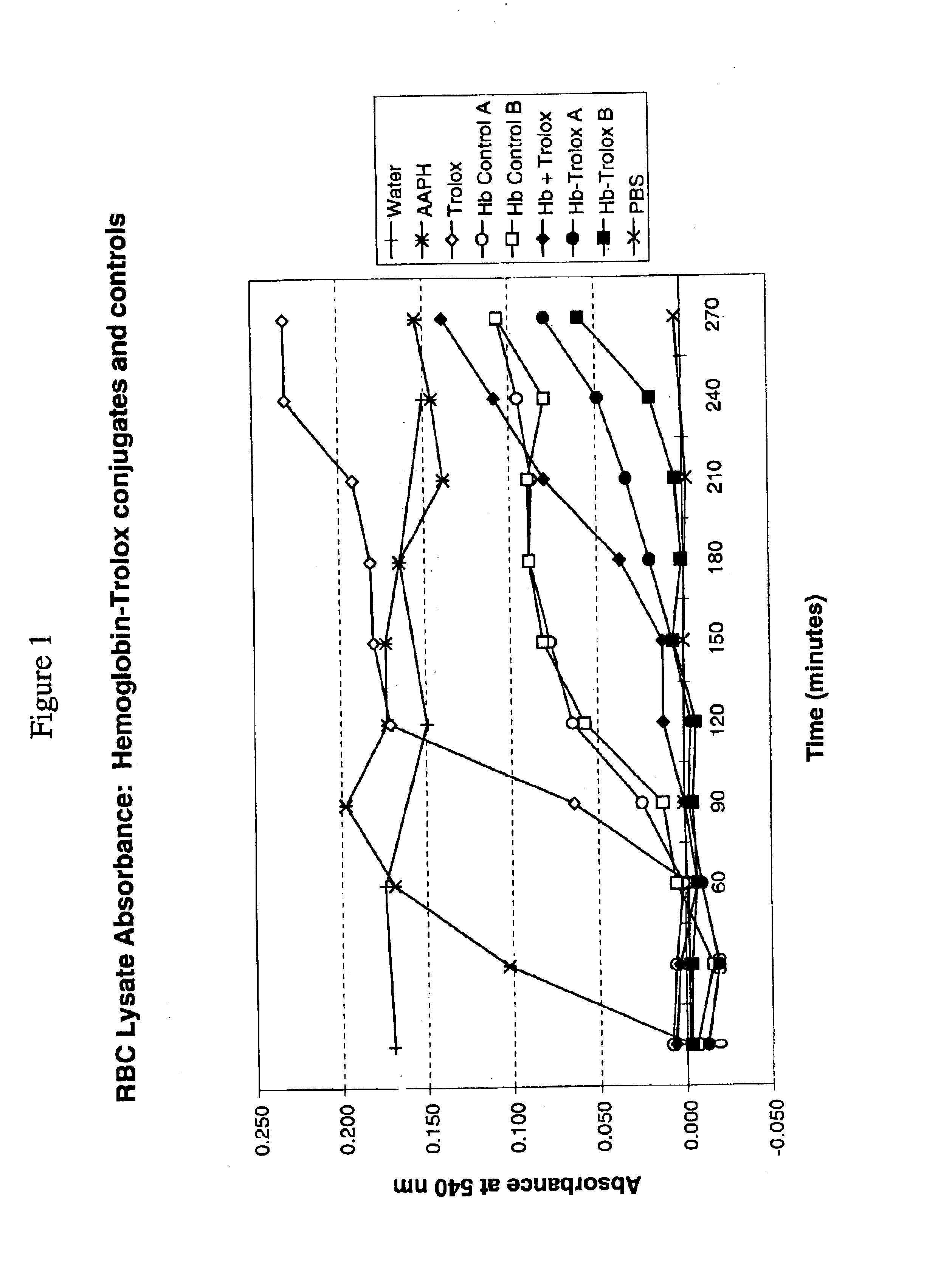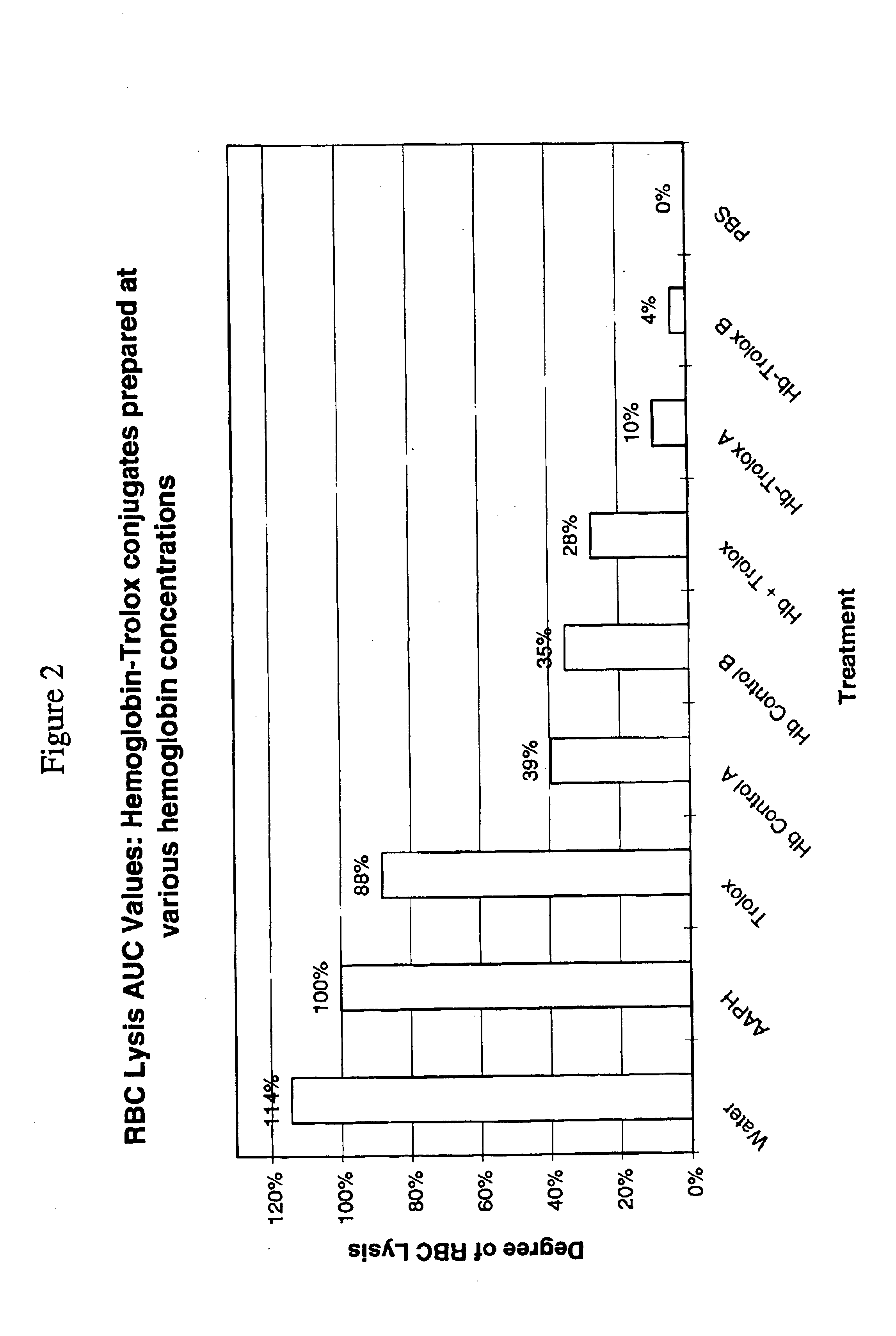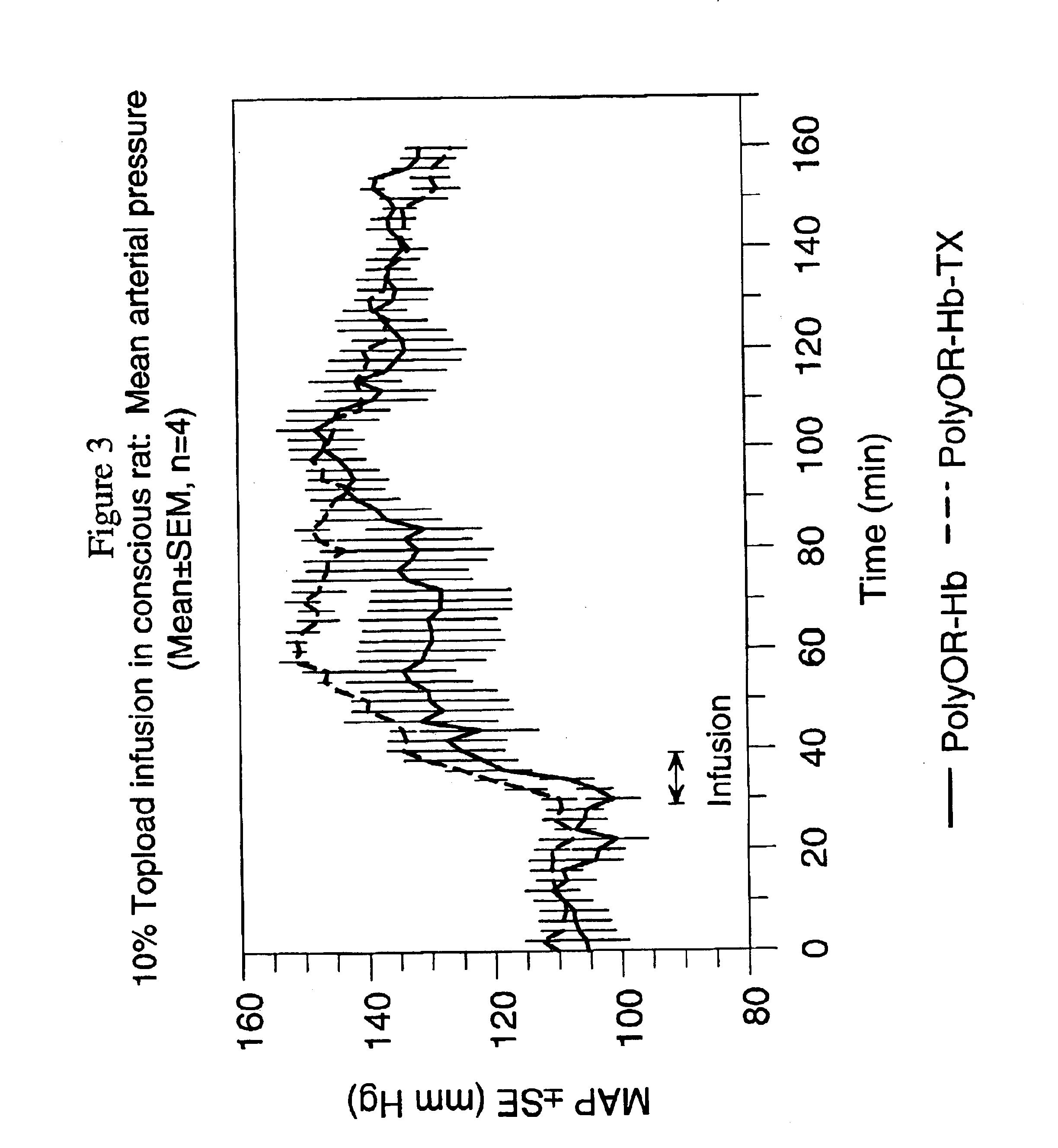Hemoglobin-antioxidant conjugates
a technology of hemoglobin and conjugates, which is applied in the field of hemoglobin compositions, can solve the problems of reducing the usefulness of met-hemoglobin, causing deleterious effects, and presenting an additional source of potentially damaging reactive oxygen species
- Summary
- Abstract
- Description
- Claims
- Application Information
AI Technical Summary
Benefits of technology
Problems solved by technology
Method used
Image
Examples
example 1
Preparation and Characterization of Conjugates
[0042]A series of experiments was conducted in which Trolox (TX) was conjugated to carbonmonoxyhemoglobin (COHb) using 1-(3-dimethylaminopropyl)-3-ethylcarbodiimide hydrochloride (EDC) as a coupling agent under different conditions set out in Table 1 below. In each case, EDC, EDC and Trolox (TX) were combined in equimolar concentration in acetonitrile for 10 minutes at room temperature to provide a stock TX-EDC solution (1.55 M). The stock TX-EDC solution was diluted with acetonitrile, if necessary, just prior to addition to Hb so that the final acetonitrile and TX-EDC content of the conjugation reaction was as indicated in Table 1. All conjugations were done in 40-50 mM MES buffer at the indicated pH values. Reaction mixtures were held at 22° C. for up to 24 hours under CO gas. Samples were filtered and dialyzed against phosphate-buffered saline (PBS), pH 7.4, prior to analysis.
[0043]
TABLE 1Preparation of Trolox-Hb reaction solutionsTro...
example 2
Measurement of Antioxidant Activity
[0048]Blood was collected into heparinized tubes and erythrocytes were separated by centrifugation and washed 3 times with 10 volumes of PBS, pH 7.4. During the last washing, erythrocytes were centrifuged at 1000×g for 10 minutes to obtain a consistently packed cell preparation. The assay for hemolysis mediated by peroxyl radicals was conducted by a modified method of Miki et al.,(M. Miki, H. Tamai, M. Mino, Y. Yamamoto and E. Niki., Arch. Biochem. Biophys. 258:373-380 (1987)). Equal volumes of a 30% suspension of fresh erythrocytes in PBS pH 7.4, test sample, and 300 mM 2,2;-azo-bis(2-amidinopropane dihydrochloride) (AAPH, a radical generator) were combined in order. Mixtures were prepared under CO gas and test hemoglobin concentration in the RBC assay suspension was 12-13 mg / ml. Mixtures were held at 37° C., and aliquots were diluted 20-fold in PBS and centrifuged at 1000×g for 10 minutes. As a measure of Hb released due to RBC lysis, the absorba...
example 3
Polymerization of Hemoglobin Modified with Trolox
[0052]Hemoglobin-Trolox conjugates (Hb-Trolox A and B) prepared in Example 1 were dialyzed against 50 mM Bis-Tris buffer, pH 6.8. Three equivalents o-raffinose (U.S. Pat. No. 5,532,352 Pliura et. al.) dissolved in water were added to solutions of hemoglobin-Trolox to give a final hemoglobin concentration of 42 mg / mL. The mixtures were held under CO gas at 22° C. for 24 hours. The solutions were made 30 mM in sodium acetate, and 20 equivalents of aqueous dimethylamine borane relative to o-raffinose content were added. After 24 hours, the solutions were dialyzed against water then PBS pH 7.4. Size exclusion chromatography under dissociating, non-denaturing conditions indicated formation of intra- and intermolecularly cross-linked hemoglobin-Trolox species (Table 5). Hb-Trolox not cross-linked by o-raffinose elutes as 32 kDa alpha-beta globin dimers under the chromatography conditions used. This non-cross-linked Hb species can be removed...
PUM
| Property | Measurement | Unit |
|---|---|---|
| molecular weight | aaaaa | aaaaa |
| temperatures | aaaaa | aaaaa |
| pH | aaaaa | aaaaa |
Abstract
Description
Claims
Application Information
 Login to View More
Login to View More - R&D
- Intellectual Property
- Life Sciences
- Materials
- Tech Scout
- Unparalleled Data Quality
- Higher Quality Content
- 60% Fewer Hallucinations
Browse by: Latest US Patents, China's latest patents, Technical Efficacy Thesaurus, Application Domain, Technology Topic, Popular Technical Reports.
© 2025 PatSnap. All rights reserved.Legal|Privacy policy|Modern Slavery Act Transparency Statement|Sitemap|About US| Contact US: help@patsnap.com



